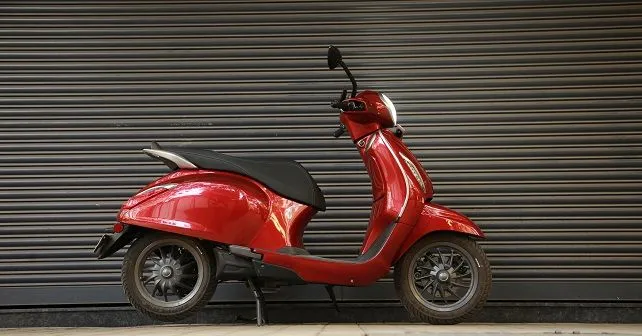
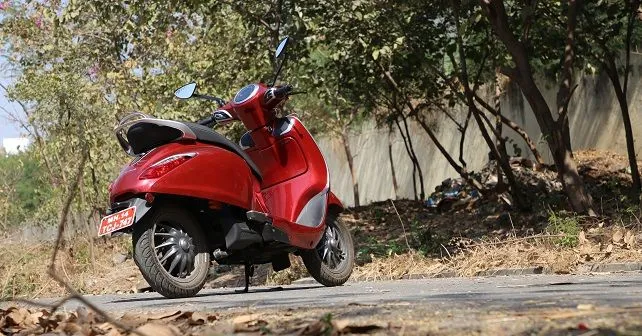
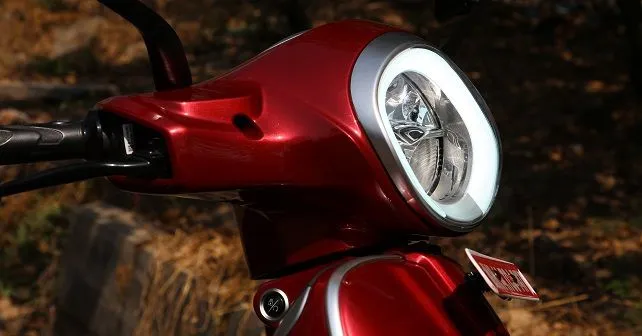
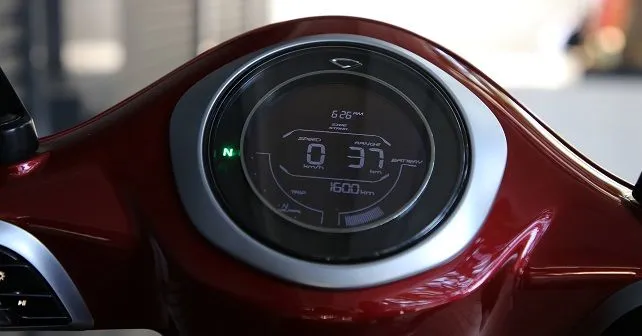
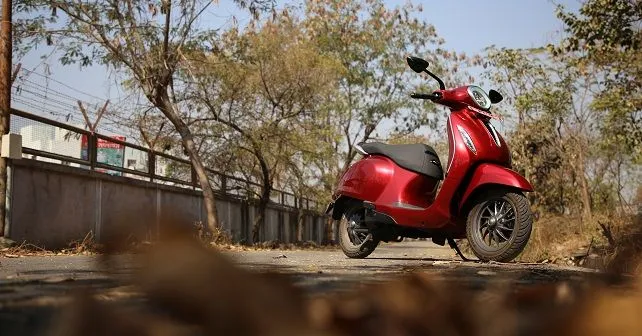
Apart from the name, the 2020 Bajaj Chetak shares virtually nothing with the older Chetak. There is, however, a feeling of nostalgia associated with the Chetak name. So, is the transition from ICE to electric enough to revive the Chetak name? We find out.
The Chetak is back. But it’s electric, which means that it’s new-age and retro at the same time. Here’s what you need to know…
Electric mobility is the direction that everybody seems to be moving in, so, naturally, it appears to be the current buzzword in the industry. It’s safe to say, though, that in India electric vehicles are still at a very nascent stage, and many customers are still reluctant to embrace them. Be that as it may, electric two-wheelers are hitting the Indian market like a hailstorm, and the latest one to do so is none other than the Bajaj Chetak.
Yes, the Chetak – the old, but very popular, scooter from Bajaj. I’m sure many of you would have had one in your garage at some point. Although the Chetak was discontinued in 2005, Bajaj has resurrected the brand in a new fully-electric avatar. So, naturally, we rode the Chetak, although only for a few hours, and here’s what we found…
Retro, but future ready
While most electric vehicles look like future space pods, Bajaj has decided to retain the retro and original look of the Chetak. And while that’s true, it does have a lot of things that make it look contemporary and future-ready, such as the large DRL on the LED headlight, fully digital instrument cluster, full-metal body, LED blinkers, and wonderful piano-finished switchgear. Interestingly, you will not find a single Bajaj logo on the scooter, instead what you’ll see is the new Chetak logo everywhere.
The Chetak definitely looks and feels premium, and its build-quality is top-notch. Because it uses a full metal body, it’s not as light as you would expect an electric scooter to be. The Chetak weighs roughly 130kgs. Still, I think that one of the biggest highlights of the new Chetak Electric is its upmarket feel.
Electric Powertrain
Instead of knocking at the gates of the Chinese market for a motor and battery, Bajaj went to Bosch for help. The German auto-components manufacturer has made the 4kw motor and the lithium-ion battery especially for the Chetak. Bajaj is also offering a 3-year or 50,000kms warranty on both, which shows Bajaj’s confidence in the quality of both the battery and motor. The motor can produce about 5bhp and 16Nm of torque.
Coming to the performance, we definitely like the manner in which the Chetak Electric accelerates. The powertrain feels very smooth and, of course, remains quiet – it doesn’t emit any strange artificial sound. The throttle response is great for the city, and the scooter has two riding modes – Eco and Sport – to choose from.
In Eco mode, you can cover around 95kms on a full charge. Sport mode, on the other hand, allows you to accelerate just a tad bit quicker, but you only manage to cover around 85kms on a single charge. During our test ride, I managed to reach a top speed of 67km/h, which is decent for city riding.
The Ride
The suspension setup of the Chetak is also pretty nice for urban settings. Although, a slightly softer suspension would have done wonders. However, I think that the heavy weight of the scooter might have been an impediment to such a suspension setup. The front end, although a little light for my liking, still provides good feedback and is good for riding in traffic.
The Chetak, however, fails to impress in terms of its overall handling. Yes, it’s manageable at slow speeds and in heavy traffic, but it’s not exactly a fun-to-handle scooter – let’s just say that the Achilles heel of any electric vehicle today is that you really feel all that weight.
The seating position is low, and the seat is very soft and comfortable. So, daily commuting will be very relaxing. The electric motor also makes the ride very smooth, and you don’t hear any clattering of parts or feel any vibrations at all. Overall, the ride experience is convenient and comfortable at best, but not engaging and fun like, say, the TVS Ntorq.
Worth the money?
The Chetak has been priced at ₹1 lakh (ex-showroom) for the base variant and ₹1.15 lakh for the top-end variant, which comes with a disc brake and metallic colour options. It’s important to keep in mind that service costs are almost non-existent for electric scooters, and you won’t have to pay for fuel either. So, in the long run, you will definitely save some money. The scooter’s price also includes the cost of a home charging station. And speaking of charging, the Chetak Electric can also be charged using a regular home socket.
The Chetak also gets some very nice features, such as a mobile charging port, on-board regenerative braking, a combined braking system, plenty of storage spaces, a reversing feature that works very nicely in tight spots, and a feature that allows you to connect your phone to monitor certain key parameters of the scooter.
The Chetak has a very high-end and plush feel to it, but to be very honest, it’s not very exciting to ride. Yes, it’s very practical and offers a great warranty, but, in my opinion, you might want to test ride other electric two-wheelers that are now available, and some which are soon to be launched, before making up your mind about switching over to electric scooters.
Also Read:
Write your Comment on